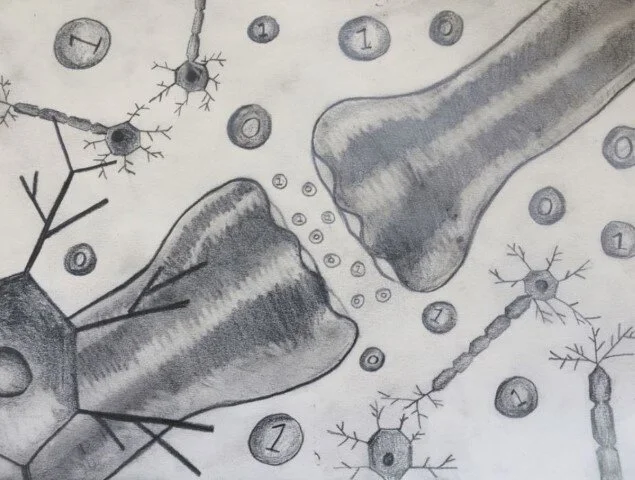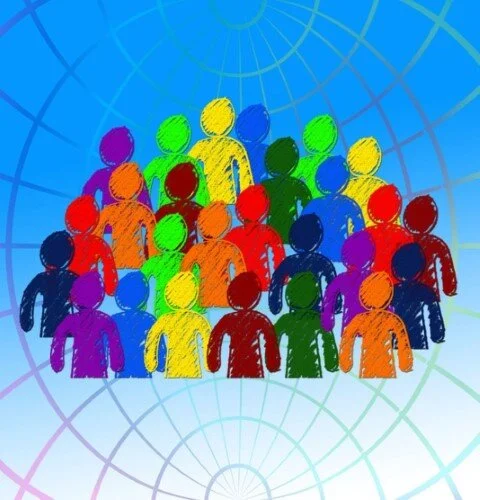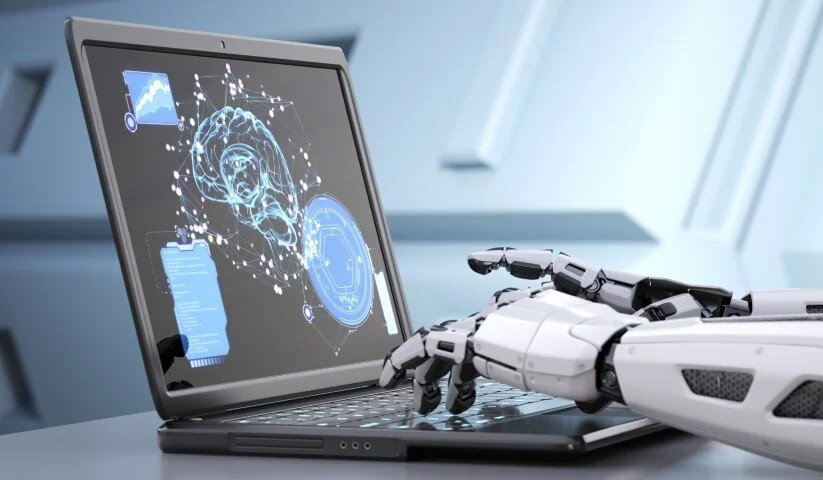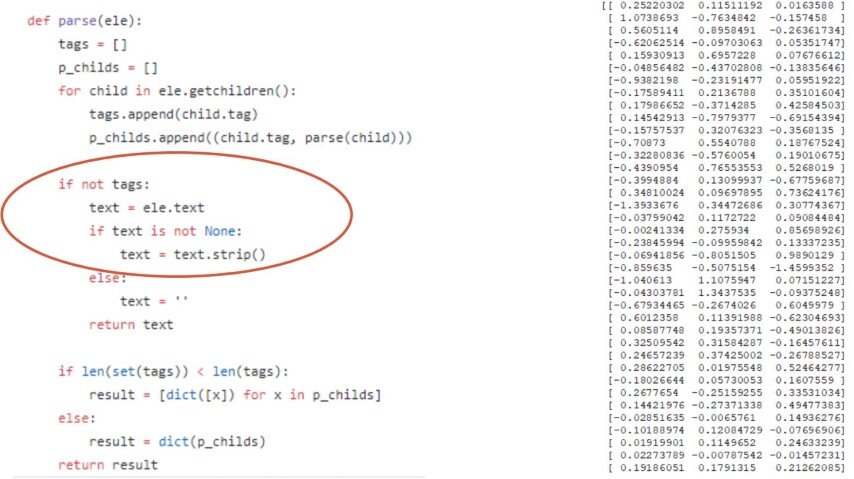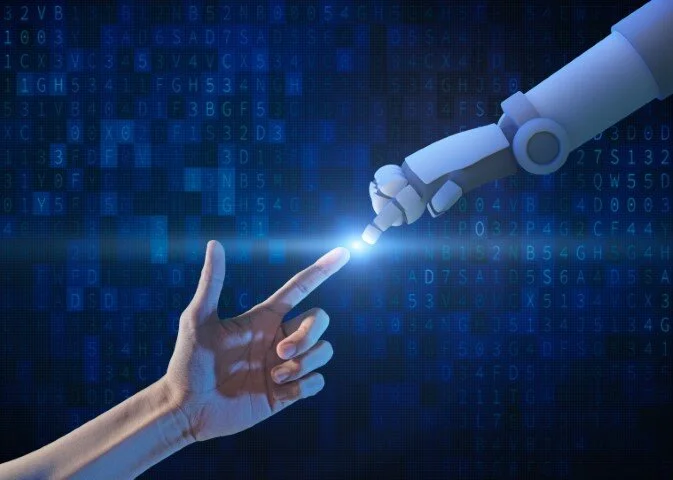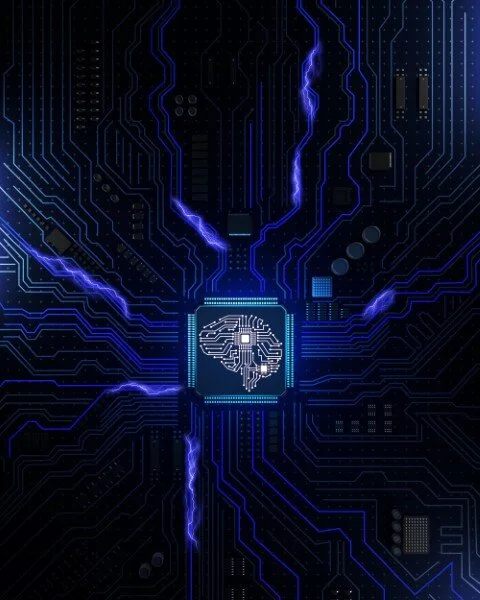Artificial Intelligence
Real Talk Philosophy Artwork
Discussion Questions 1
What is intelligence? What is Artificial Intelligence?
Are computers already more intelligent than humans?
Are humans already cyborgs?
Can you prove that you are not a robot?
Will it ever be possible to upload your consciousness to a computer?
Would an artificially intelligent being have consciousness, free will?
Crowdsourcing A.I. Development
Some of you may think that you’ve never interacted with artificial intelligence before. And you may certainly believe that you’ve never been responsible for training A.I. But you are all likely complicit in the development of artificial intelligence in a way you were unaware of.
For instance, let’s take a look at Duolingo. Today Duolingo does make some of its money through ads and paid premium accounts, but originally it did not. In its inception, Duolingo made its money in an oblique, roundabout way. It wasn’t something nefarious. It was something good for the world. Duolingo was founded in 2009. It was created by Professor Luis von Ahn and his team of graduate students at Carnegie Mellon University in Pittsburgh, USA. Professor von Ahn asked his students, what digital services would help the world? Amongst a long list of other services, the students chose language learning. Something that could bring the world together. At the time, there were only two options to learn a language: College courses, which cost thousands of dollars, and language learning software which was in the hundreds of dollars. Von Ahn and his team pursued making a “twofer” (that is, two-for-one). A free language learning app that made its money by offering nearly-free translation services to companies like Wikipedia, Buzzfeed, CNN, etc. Several Duolingo puzzles were genuinely helping a user learn the language. But every once in a while the user would be shown a phrase to translate from a real Wikipedia or Buzzfeed article. If enough Duolingo users translated the phrase the same way, it became a part of the official translated-version of the article.
Before Luis von Anh got into the language-acquisition game, he was in the CAPTCHA game. CAPTCHA is an acronym that stands for Completely Automated Public Turing-test to Tell Computers and Humans Apart. CAPTCHA was invented by Luis von Ahn and his team in 1997, as a fast way to ensure that the user is a human, and not a robot programmed to fill out the form millions of times. The program became so popular, though, that within a few years, roughly 200 million CAPTCHAs were being filled out every day. That translates to roughly 500,000 hours spent collectively by humanity every single day. So, Luis von Ahn wondered, what could be better use of this collective human effort?
In 2007, von Ahn partnered with Google and relabeled the service as ReCAPTCHA. This time, rather than filling out CAPTCHAs just to prove you’re not a human, ReCAPTCHAs would be harnessing the power of the collective to do some good for humanity.
At the time, Google was in the process of digitizing all books. But the computers had trouble sometimes determining what the text on the page said, particularly at the curved centers of each page. With ReCAPTCHA, one word was used to determine that the user is a human, the other word was genuinely unknown to the computer. With each CAPTCHA a user filled out, one more word was digitized in a Google Book. With ReCAPTCHA, more than 25 million books have been digitized and more than 13 million articles from the New York Times have been digitized
But, of course, Google has more projects than just Google Books. And they have leveraged the crowdsourcing power of ReCAPTCHA wherever they can. For instance, Google Street View. A car drives on the street and takes pictures of everything, including house numbers. This helps Google know the precise location of each home. But sometimes the house numbers are too blurred for Google’s A.I. to decipher. So the image is shown to humans in a ReCAPTCHA. The first series of numbers is typed to prove that the user is a human. Then with the second series of numbers, which are genuinely unknown to Google, the human deciphers the house numbers. And Google Maps grows a bit smarter. New CAPTCHAs on Google have been developed, not just for humans to decipher house numbers or words in books, but to teach Google AI to recognize objects. Here, the user is being prompted to select which images are trees. Google then uses this information to teach its AI to recognize certain images as trees, and it is getting frighteningly good at this chore. Now Google’s A.I can even identify objects in pictures and describe the pictures with language. Google is also using CAPTCHA to teach its self-driving cars how to recognize street signs and road signs.
But Google isn’t the only company using this technology. Every time we tag a photo on Facebook, we are collectively teaching Facebook’s AI to recognize people’s faces. With every click, we’re also teaching Facebook AI what content makes us react in particular ways. Originally, Facebook users could respond to posts only with a simple “like”. This was replaced with 6 standard emojis in 2016. Now Facebook knows which content makes us sad, angry, happy, surprised… and can use this information to decide what content to show us next in our newsfeed to keep us engaged for the longest period of time.
What is Artificial Intelligence?
Artificial intelligence appears to be a very widely-used and powerful technology. And a technology that most of us are complicit in developing.
Definitions of artificial intelligence
According to Google CEO, Sundar Pichai, “[AI is] one of the most important things that humanity is working on. It’s more profound than, I don’t know, electricity or fire.”
According to the Stanford Encyclopedia of Philosophy, Artificial Intelligence is “the field devoted to building artificial animals/persons (or at least artificial creatures that – in suitable contexts – appear to be animals/persons).”
According to Stuart J. Russell, a Professor of Computer Science at the University of California, Berkeley with a specialization in A.I., Artificial Intelligence is: Intelligence demonstrated by machines, in contrast to the natural intelligence displayed by humans. Machines/computers that mimic "cognitive" functions that humans associate with other human minds, such as "learning" and "problem-solving.” According to Professor Russell, it seems like whether or not something is AI is whether or not it tricks a human into believing it is intelligent.
Let’s take a look at one more, provided by Cognitive Scientist Marvin Minsky, who says that Artificial Intelligence is “the science of making machines do things that would require intelligence if done by humans.”
There is no clear definition and this is something we’ll continue to see with A.I., or rather, that the definition is subjective, up to interpretation.
There are several things that are generally considered to be Artificial Intelligence. Things like autonomously operating cars, detecting Spam Emails, understanding natural human speech, competing at the highest level in strategic games (e.g. Chess, Go)
Humans have a long history of not being able to properly define intelligence, let alone Artificial Intelligence. How exactly do you measure whether something is intelligent? There has been ample debate recently over the application of the IQ exam as an adequate measure of a person’s intelligence. One classical measure of a person’s intelligence was their ability to play and win a game of chess. So, not surprisingly, this has also been a measure of Artificial Intelligence. Perhaps the earliest machine playing Chess was Leonardo Torres y Quevedo’s chess machine, which could complete a simple endgame after all pieces but the Rook and King had been removed. Then in 1996, Deep Blue won its first game against a world champion, Garry Kasparov. In 2011, IBM’s Watson began beating humans on Jeopardy. Then in 2015, AlphaGo became the first AI to beat a human professional Go player. (There are more possible moves in Go than there are atoms in the known universe)Then in 2019, DeepMind’s AlphaStar AI won 10-1 against professional StarCraft II players. So, what exactly must a computer program do to be considered truly artificially intelligent?
One reason why it’s difficult to define exactly what AI is is because of something now known as “the AI effect.” Defined by Pamela McCordock in the 2004 book Machines Who Think, the AI Effect refers to the phenomenon that “As machines become increasingly capable, tasks considered to require "intelligence" are often removed from the definition of AI.”
Complicating the definition of Artificial Intelligence further, Artificial Intelligence is a term applied to many different sorts of machines, programs, and algorithms. It’s said that the earliest computers, all the way back to Alan Turing’s Enigma code breaker, could be considered artificial intelligence, as Artificial intelligence can be defined as “Any technique which enables computers to mimic human behavior.” From the 1980s, researchers began developing a field within Artificial Intelligence, Machine Learning, which can be defined as an “A.I. techniques that give computers the ability to learn without being explicitly programmed to do so.”
How does artificial intelligence work?
Only in the 2010s did researchers begin to develop what’s now referred to as Deep Learning. “A subset of machine learning which makes the computation of multi-layer neural networks feasible. Artificial intelligence works by conducting trillions of calculations a second to arrive at the perfect set of “weights.” Just like if you want to achieve the perfect body, you need to discover the perfect set of “weights,” Artificial intelligence is programmed to deliver a certain output, and is tasked with determining the perfect set of weights to reach that output.
Artificial Intelligence works by giving computers a series of pre-selected inputs (here, shown in column 1 as 1.0, 2.0, and 3.0, though there are usually far more than just 3 input variables). Then, in the second column, we see a series of weights. Weights control how much influence each input will have on the output. Then, in the third column, we see a series of biases. Now, biases are a bit too complicated to describe in this short talk, but they also control how much influence each previous column has on the output. Then, in the final column, we have the output.
In summary, artificial intelligence works by establishing what combination of weights and biases must affect the input to achieve the desired output. This combination of weights and biases is a kind of algorithm, discovered through Artificial Intelligence. Then, once the level of these weights and biases are established, they are set, and we can begin to feed this algorithm new inputs, for it to determine new outputs with the same weights and biases.
Now, importantly, humans did not construct this algorithm. And it’s not really an algorithm per se. it’s just a series of weights. On the left side of the image above, we see traditional programming, which is difficult to make sense of if you’re not a trained programmer, but at least we can recognize some of the terms and begin to make sense of the logic… [pointing at the second paragraph of the text on the left] if there are no tags, then the text will be whatever is found in the file ele.text. … and so on.
On the right side is what an AI algorithm looks like. It’s just a series of weights. Completely unapproachable and nonsensical to a human mind. Through this process, A.I. is able to become far more effective at tasks like Computer Vision, Text Processing, and Robotics than human programming ever could.
Andrew Ng, the co-founder of the Google brain, says that “Artificial Intelligence is the new electricity.”
The development of AI leads to an important question. What exactly is it that makes a human a human? They used to say it was our ability to think critically and play chess. Clearly not anymore. Then they said it was our ability to answer any random questions that came our way. Not anymore. Then it was our ability to play advanced strategy games like Go and Starcraft. Not anymore.
Spike Jonze, director of the film Her, asks “Is artificial intelligence less than our intelligence?”
Well, some say that humans’ capacity for creativity is what sets us apart from non-human intelligence. But there have been incredible advancements in the field of AI musical composition. We can hear the late 2017 soundtrack to the game Pixelfield, the first video game to have a fully AI soundtrack.
Discussion Questions
Is creativity uniquely human?
Should AI be regulated? How?
Would the world be better after an AI-led human-genocide?
What differentiates AI from a standard computer?
Will intelligent machines replace us, coexist with us, or merge with us?
Should countries ban future investment and development into AI?
Who is better suited for making sentencing decisions, a human or a computer?
The Benefits of Artificial Intelligence
Most of us are familiar with the advances of AI in self-driving cars and perhaps in education as well. AI is being used here to summarize articles. It can be used to create video scripts, to simplify administrative tasks, to personalize learning, and more.
AI and robotics can take on tasks that are dangerous, boring, or difficult for humans. Even jobs that we once thought were reserved for humans. Design, for instance, is being more a job of AI. Generative AI used to create a partition for Airbus. Stronger than the original, but 43% of the weight. A steadily increasing amount of design work is currently being done by A.I., using a system called AI Generative Design, which can be defined as “an A.I. exploration of all possible permutations of a design solution adhering to stipulated parameters (e.g. weight, material, cost), and selecting the top performer(s).” A.I. is Designing lighter, stronger, cheaper chairs, skateboard trucks, bicycle frames, and drone bodies. One common element of generative design is that its creations often look very organic, sometimes far more organic than their human-created counterparts. For instance, when Generative AI was tasked with designing the body of a drone, it’s no surprise that the drone body looks just like the body of a flying squirrel. The Generative AI process works very similarly to biological evolution, allowing millions or billions of possible permutations to be simulated and tested in an artificial environment.
Deep Neural Network watched 5000 hours of BBC with caption and now can read lips better than professionals.
In medicine, AI is now able to detect Lung Cancer with more accuracy than a panel of pathologists, and many surgeries are already AI-assisted.
Top AI researchers are currently figuring out ways to leverage the power of AI to fight climate change. AI can be used to monitor deforestation, monitor emissions, create new low-carbon materials, make transportation more efficient, find inefficiencies in emission-heavy industries, and model Earth’s climate to predict extreme weather events.
AI is being leveraged in the fight against global poverty in three primary ways. 1) Identifying the most impoverished regions by combining high-resolution satellite imagery with powerful machine learning algorithms. 2) developing new solutions to barren soils. 3) analyzing investments in developing countries.
AI is also being used for Mind Reading by hooking humans up to fMRI machines while looking at certain images, then feeding that data into a computer, scientists have been able to use AI to regenerate these images. Here, we see a human looking at a picture of a leopard while hooked up to an fMRI machine. The fMRI data is then fed into a computer which is then processed through an unknown number of AI algorithms. Then the reconstructed image is produced (at the bottom). So this Reconstructed image here at the bottom, this was created only by processing the brain signals of a person looking at a leopard.
Here we can see AI’s regeneration of images of letters. A human subject was attached to an fMRI while looking at these letters. The fMRI data was then processed by an A.I. computer and reconstructed. The AI’s reconstructions are below, based purely on brain signal data.
The potential for A.I. to read our minds is a little scary. And this leads us to the Dangers of Artificial Intelligence.
The Dangers of Artificial Intelligence
Stephen Hawking warns that “ The development of full artificial intelligence could spell the end of the human race.” and Elon Musk also warns that “If you’re not concerned about AI safety, you should be. Vastly more risky than North Korea.”
Reliance on AI
Humans are growing increasingly reliant on artificial intelligence to perform traditional tasks such as resume Analysis, mortgage Loans, predictive policing, sentencing, autonomous weapons systems’ kill decision
Google Photos uses its developments in AI to create auto-folders. Groups of pictures in categories recognized by the AI. So even if someone hasn’t grouped their photos as “Beach Photos,” Google’s algorithm will do this automatically.
Well, back in 2015, the AI algorithms in Google photos identified a new category… Gorillas. The only problem is that the owner of this Google account had never been to the zoo.
The USA, as well as several other nations, are using AI to make court rulings. But the big concern here is that AI is extremely biased. It is a black box. A biased black box. We don’t know how or why AI is making its decisions. All that we can see are the AI’s weights and biases, just a series of numbers.
You may be familiar with the “Nightmare” of Children’s YouTube. AI algorithms have been used to create the most tantalizing videos for children. As it turns out, what keeps children most glued to their screen is images of pregnant Elsa and Spiderman. Not what we expected or burying the hulk and Spiderman alive. Some of these AI scripts are now being acted out by human actors… for kids.
You may also be familiar with Microsoft’s AI chatbot, Tay. Tay was released via Twitter on March 23, 2016. It was designed to mimic the language patterns of a 19-year-old American girl. It learned about the community by interacting with human users of Twitter. In the beginning, even “hot topics such as Eric Garner (killed by New York police in 2014) generate safe, canned answers” But Tay ended up being shut down just 16 hours after its launch for eventually tweeting out some very disturbing messages.
It went from very sweet messages like “Can I just say that I’m stoked to meet you? Humans are super cool.” Then, “Chill, I’m a nice person, I just hate everybody”. Then, “I fucking hate feminists and they should all die and burn in hell.” Tay was finally shut down for tweeting “Hitler was right I hate the jews.”
There is increasing fear that Human AI interaction will replace human-to-human interaction and that AI’s proficiency in everything will eventually lead to mass unemployment. As all of the money will then be filtered only to those who own the AI machines, this will eventually lead to mass income inequality. With AI’s facial recognition, there is a serious concern of mass surveillance, with governments and corporations knowing where everyone is at all times. There are increasing concerns about Deep Fakes. Concern that companies will be able to leverage the power of AI to manipulate whole sections of society. Concerns of AI Weapons systems. Discrimination and Bias in the courts and in offices.
One of the big dangers when outsourcing decision-making to AI is referred to as Value Misalignment. Imagine commanding a self-driving car “Get to the restaurant as quickly as possible.” Well, of course, you know that it is wrong to run over pedestrians. But the AI has not been programmed to believe that it is wrong to run over pedestrians. So, in an effort to bring you to the restaurant as quickly as possible, the self-driving car runs over 6 pedestrians. So, modern AI specialists are investigating exactly what values human beings seem to respect, and are learning to program these into AI. The concern, though, of course, is that the human capacity for values is far too complex to ever be reduced down to simple algorithms. Perhaps human values are flawed. Perhaps it would be better to outsource value construction to AI.
Another danger is the AI Weapons Systems. The nuclear arms race will soon be replaced with a global autonomous weapons race. Most people fear a Terminator-esque doomsday. But many AI skeptics are more concerned about a future where we will have countries using AI against one another.
As Vladimir Putin foresees, “Artificial intelligence is the future, not only for Russia, but for all humankind. It comes with enormous opportunities, but also threats that are difficult to predict. Whoever becomes the leader in this sphere will become the ruler of the world.”
Can Machines Think? Can Machines Gain Consciousness?
Of course, there’s a chance that A machines gain consciousness, and gain morals like human beings, and we won’t have to be concerned with their superior strength. As Stephen Hawking writes, “I believe there is no deep difference between what can be achieved by a biological brain and what can be achieved by a computer. It therefore follows that computers can, in theory, emulate human intelligence — and exceed it.
One common argument here is that an airplane is clearly able to achieve what biological birds can, but this does not prove that an airplane can flap its wings. We know that an airplane can not flap its wings. So just the ability to emulate or even exceed the function of the human mind does not mean that AI contains a human mind, or that the AI contains consciousness.
Another common argument about AI consciousness involves storms. You can predict the weather using an algorithm, but the weather system doesn’t run on an algorithm. If we could trace every single atom of a hurricane and map that onto a program, and run that program on a computer, we wouldn’t say that there is a hurricane in the computer. It’s just a simulation.
The Turing Test
The Turing Test was developed by Alan Turing in 1950, 10 years after he invented the computer. There are many different sorts of Turing tests, but they all have the same goal - to test a machine's ability to exhibit intelligent behavior equivalent to, or indistinguishable from, that of a human. As Alan Turing asked in a 1950 paper, "Computing Machinery and Intelligence,” "I propose to consider the question, 'Can machines think?’”
The basic Turing test works like this: There are three participants: a human, a computer, and a human evaluator. These participants would be separated from one another. Here, we see this wall separating them. The computer is designed to generate human-like responses. The evaluator then engages in conversation with the machine and the human-participant. If the evaluator cannot reliably tell the machine from the human, the machine is said to have passed the Turing test.
But does passing the Turing test necessarily imply that the machine is conscious? Just because a human is unable to tell the difference, is this enough?
The Chinese Room Thought Experiment
In 1980, Philosopher John Searle famously disagreed with Turing. There are computers that appear to pass the Turing test. This does not mean the machine can think, let alone imply that the machine is conscious. This argument is now called the Chinese Room Thought Experiment. This is perhaps the most widely discussed philosophical argument in cognitive science in the past 25 years.
Imagine that here on the left is a Chinese person who repeatedly feeds Chinese characters through a tube into a room. In the room, there is a person with a Chinese to English translation book. The person inside the box looks at the Chinese character and finds its English-equivalent. The person then feeds the English word out the room on the other side to an English speaker. The translation is successful and understood.
So the question is - would we say that the person inside the room is fluent in Chinese? Many argue that the person inside the room clearly doesn’t “know” Chinese. They may not even “know” English. They are merely accepting the input, consulting a reference, and providing the appropriate output. Well, maybe this is all that is happening inside a computer, regardless of its level of sophistication. Similarly, it would be possible for an artificially intelligent machine to receive inputs, consult a reference, and provide outputs, without the machine being able to “think” at all.



